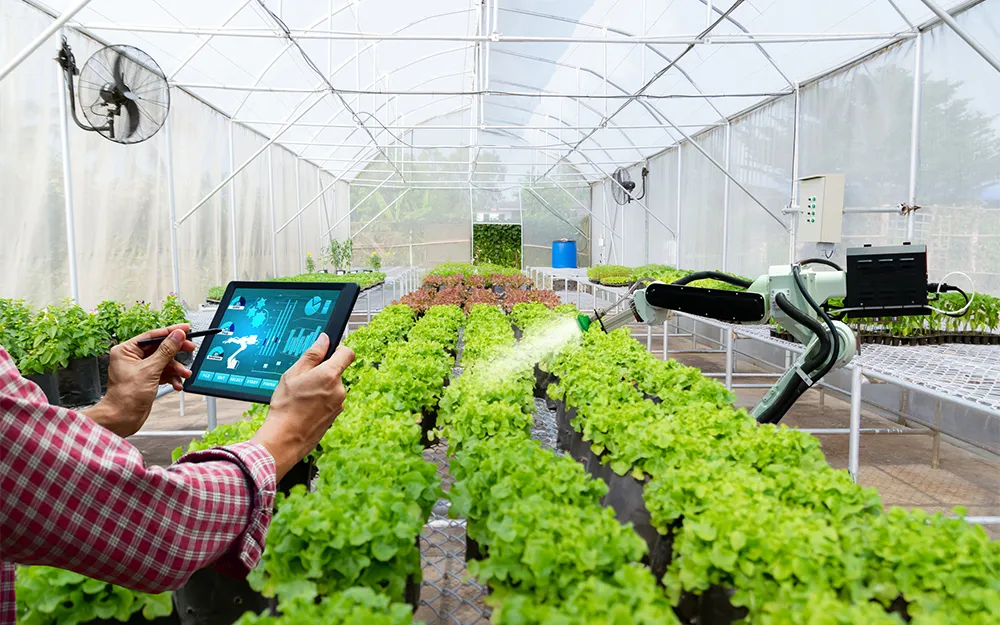As Indonesia navigates its path toward food security and agricultural modernization, the integration of Internet of Things (IoT) technology into farming has become a game-changer. From precision fertilization for rice paddies to real-time climate control in greenhouses, IoT-based smart farming systems are unlocking higher productivity, sustainability, and data-backed decision-making for farmers across the archipelago.
With nearly 29% of the workforce employed in agriculture, yet consistently facing yield instability and environmental pressures, Indonesia’s push for smart farming solutions is both urgent and strategic. Below, we explore four of the most popular and impactful IoT-driven farming systems in the country, drawing from their adoption scale, technological edge, and measurable outcomes.
1. Eratani – Precision Farming for Smallholder Empowerment
Eratani, a Jakarta-based agritech startup, has emerged as one of the most impactful smart farming solutions in Indonesia. The company leverages IoT-based soil sensors to monitor critical parameters such as nitrogen (N), phosphorus (P), potassium (K), and pH levels, then delivers real-time fertilization recommendations via a mobile dashboard.
What sets Eratani apart is its direct integration into the smallholder farming ecosystem. As of 2025, Eratani has partnered with over 22,000 farmers across 410 villages, providing both data-driven support and access to working capital through partnerships with state-owned Bank Rakyat Indonesia (BRI). According to a report by ID Metafora (2024), farmers using the Eratani system have reported a 29% increase in crop yields and 25% rise in net income.
The startup’s mission aligns with national agricultural modernization goals, supporting Indonesia’s Food Estate Program while bridging the digital gap in rural areas. Its ease of use through smartphone or SMS interfaces makes it especially accessible to farmers in remote regions (ID Metafora, 2024).
2. CI Agriculture / HARA – Satellite-Powered Precision Insights
While Eratani focuses on ground-level sensors, CI Agriculture (part of the broader HARA ecosystem) blends IoT with satellite imagery, drone mapping, and mobile data collection to provide holistic field management.
HARA’s platform collects real-time environmental data such as soil moisture, temperature, nutrient levels, and weather patterns. Farmers and cooperatives receive insights via a digital dashboard that recommends irrigation schedules, fertilizer application, and pest control strategies.
What makes CI Agriculture notable is its focus on data interoperability—its systems not only serve farmers but also banks, insurers, and food manufacturers looking to de-risk agriculture and promote traceability. According to Katadata (2023), the company’s data footprint already covers over 50,000 hectares of farmland in Indonesia.
HARA’s focus on data decentralization and blockchain transparency also appeals to global ESG-conscious investors. With support from GrowAsia and USAID, CI Agriculture is among the few agritech ventures in Indonesia tackling the agricultural value chain end-to-end (Katadata, 2023).
3. Telkom IoT Agriculture – LoRa-Connected Plantation Intelligence
For larger-scale plantations and agribusinesses, Telkom Indonesia’s IoT Agriculture platform offers a robust, networked solution. Using LoRaWAN (Long Range Wide Area Network) sensors, Telkom enables farms to remotely monitor soil fertility (NPK), moisture, pH, and electrical conductivity, along with GPS-positioned crop health tracking and drone-assisted imaging.
Designed to cover large hectares with minimal power consumption, Telkom’s system connects thousands of sensor nodes to a central dashboard where agronomists can make informed decisions on irrigation timing, fertilizer dosage, and pest prevention.
A pilot deployment in West Java's rice fields showed a 25% water use reduction and improved fertilizer efficiency by up to 30%, according to Telkom's official IoT use case library (Telkom IoT Agriculture, 2024).
In addition, the system is increasingly integrated with AI-powered predictive modeling, enabling plantation managers to plan around weather volatility and climate risk—an increasingly critical need as Indonesia faces more unpredictable monsoon patterns.
4. Greens Pod – AI + IoT + Blockchain Modular Farming
While initially designed for urban environments, the Greens Pod system by a Bali-based startup is fast expanding into land-based farming zones, particularly for high-value horticulture. Its modular farm units—resembling shipping containers—are equipped with a full suite of IoT sensors that control and monitor temperature, humidity, CO₂ levels, soil nutrient content, and lighting schedules.
Each pod uses AI to optimize growing conditions in real time, reducing the need for pesticides and maximizing water use. According to Katadata (2024), Greens Pod claims to boost harvest cycles by 50% and increase crop yield by up to 120× per square meter compared to traditional methods. These results are particularly relevant for regions with land constraints or climate unpredictability.
Moreover, Greens integrates blockchain-based traceability, allowing buyers to verify the origin, growth conditions, and inputs used in every batch of produce—enhancing food safety and market value in both export and high-end domestic markets (Katadata, 2024).
IoT Smart Farming: Beyond Gadgets
What ties these four systems together is not just hardware innovation, but their capacity to convert raw data into actionable decisions. Whether it’s helping a rural farmer choose the right time to water their crops or enabling large plantations to monitor thousands of hectares from a dashboard, the real power lies in analytics, affordability, and adoption support.
These technologies also contribute to broader national goals. The Ministry of Agriculture (Kementan) has actively supported smart farming pilots in West Java, Sumatra, and Sulawesi through programs like Kartu Tani, while banks like BNI and BRI are increasingly tying IoT-based monitoring into agricultural loan risk assessments.
What’s Next?
Indonesia’s smart farming future is shaped not just by tech readiness but also by farmer training, public–private collaboration, and financing mechanisms that support long-term adoption.
As noted by Eratani CEO Matt Setiawan in an interview with DailySocial (2024), “The future of farming isn’t just digital. It’s about empowering the farmer to make better decisions with the right tools, at the right time, and with the right incentives.”
The growth of smart farming in Indonesia is just beginning—but these four platforms are already setting the benchmark for impact, scalability, and sustainability.
Read More






 Wednesday, 07-01-26
Wednesday, 07-01-26







